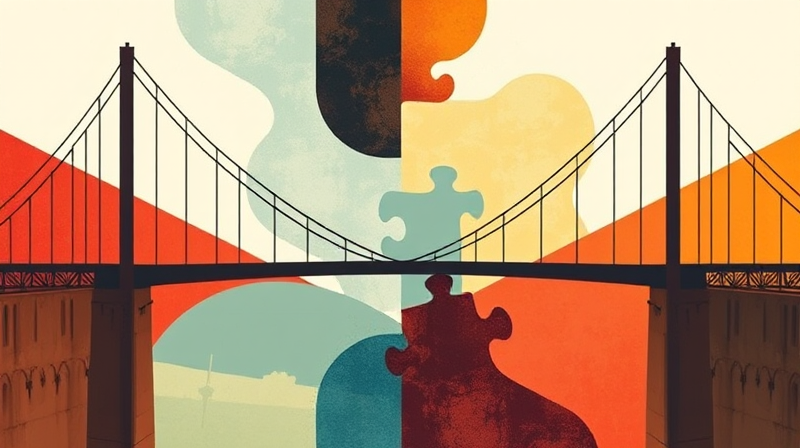Developing the ability to read with a critical eye is a transformative journey that not only enhances academic performance but also fuels personal growth. Critical reading empowers you to see beyond the surface of words, uncover hidden meanings, evaluate complex arguments, and build your own well-informed opinions. It is a skill that opens up a world of deeper understanding and thoughtful analysis.
Every text we encounter carries layers of ideas, message, and perspective. The process of critically reading a text involves more than simply moving your eyes across the page; it challenges you to interact with the content actively and reflectively. Whether you are a student, a professional, or an inquisitive lifelong learner, employing critical reading techniques can transform your engagement with any literature, report, or article.
Start with Preparation
Before immersing yourself in the expansive details of an article, preparation is key. Look at the title, headings, subheadings, and any abstracts or summaries available. These elements will give you a preliminary insight into the overarching ideas of the text. By setting this foundation, you prepare your mind for deeper engagement and avoid getting overwhelmed by the details.
- Examine the title and subheadings to outline the main structure.
- Review the abstract, introduction, and conclusion to pinpoint core concepts.
- Reflect on the author's background and the intended audience, as this context can shape the perspective in the article.
- Establish a purpose for your reading and set meaningful questions to guide your exploration.
This initial stage is essential as it motivates you to take an active role in your reading experience rather than passively consuming information.
Engaging with the Text
The next step involves merely interacting with the article. Don't be afraid to slow down and read the text multiple times if needed. Active engagement transforms reading into a dialogue with the author. Annotation is a powerful tool in this process; by underlining important ideas, jotting down questions, or even highlighting passages, you create signposts that guide your understanding during and even after the reading session.
If you come across unfamiliar words or complex phrases, take a moment to look them up. This not only helps in better comprehension but also enriches your vocabulary and understanding of the subject matter. Take detailed notes, summarizing both the main ideas and your personal reflections. This way, you build a repository of ideas that you can refer back to and share with others.
Delving Into Analysis
With the foundation laid and the text engaged with, it's time to analyze what the author is attempting to communicate. Critical analysis is about evaluating the structure and argument presented in the text. Ask yourself: What is the thesis of this article? What supporting evidence does the author use, and how does it reinforce the main message?
Analysis is where you start questioning the text and begin to see it through a lens of logical reasoning. Look for recurring patterns or inconsistencies that might challenge the argument's validity. Sometimes, the author may present the information in a way that omits alternative perspectives, and recognizing this can provide deeper insights into the overall argument.
Questioning to Enhance Understanding
Once you have a solid understanding of the content, it is vital to **question the text**. Ask yourself thought-provoking questions such as who, what, where, when, why, and how. This not only deepens your engagement but also makes you aware of potential biases and assumptions in the author’s viewpoint.
Questioning is the cornerstone of critical reading. By challenging the claims made in the article, you develop a skeptical yet open-minded approach. This process encourages you to look for supporting evidence and to consider the historical and cultural context in which the text was written. Consequently, you can identify strengths and weaknesses in the argument and form a more well-rounded understanding.
Synthesizing Information
The process of synthesis involves integrating new knowledge with what you already know. As you take in the various facets and arguments of the text, try to connect these with your own experiences and previous readings. This integration process is crucial because it transforms raw information into meaningful insights.
Summarize the key points in your own words and compare them with your preconceived notions or other sources on the topic. Reflecting on these connections often sheds light on broader implications and deepens your grasp of the subject matter. This method not only enhances retention but also refines your ability to explain complex ideas in simple terms.
Reflecting and Responding
After thoroughly engaging, analyzing, and synthesizing the content, reflection is the final and perhaps the most personal step. Reflect on how the information aligns or conflicts with your own thoughts and experiences. Writing a critique or even discussing your observations with a friend or a colleague can further solidify your understanding and open the door to new perspectives.
This stage is where you convert passive reading into an active learning experience. It is also an opportunity to apply the learned concepts to new contexts, test their validity, and see how they influence your thinking on broader topics.
In conclusion, the journey of critical reading is about turning every article, book, or research paper into a stepping stone towards deeper understanding and intellectual empowerment. Every step, from preparing for reading to reflecting and responding, builds on the previous one, creating a robust framework for learning. Keep practicing these techniques consistently, and soon you’ll find that reading is not just about absorbing facts, but about questioning, analyzing, and evolving with every new piece of information you encounter.
By committing to this approach, you not only become more discerning in your consumption of information but also contribute to a culture where knowledge is continuously questioned, verified, and expanded. Embrace the challenge of critical reading and let it inspire you to think beyond the obvious, fostering a richer, more dynamic understanding of the world around you.








